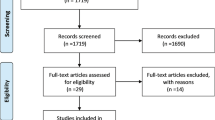Abstract
Background
In Edinburgh a group of surgeons agreed to convert to a lightweight, composite mesh (Ultrapro—Ethicon) for totally extraperitoneal (TEP) inguinal hernia surgery. The aim of this study was to compare the outcome following the use of a new lightweight vs a standard heavyweight mesh during TEP hernia repair.
Methods
Patients undergoing TEP using lightweight (LWM) or heavyweight meshes (HWM) between March 2004 and March 2006 were identified from the Lothian Surgical Audit database. The patients who re-presented with recurrence of hernia were studied in greater detail. Date of re-attendance at a clinic with recurrence was used as a surrogate for date of recurrence.
Results
Two hundred and fifty one patients had 371 hernia repairs with LWM. A total of 16 (4.3%) recurred with a median follow-up of 14.5 months. A concurrent group of 326 patients had 425 repairs with standard mesh and have had 12 (2.82%) recurrences with a median follow-up of 22.4 months. A group of patients operated immediately prior to the introduction of LWM consisted of 328 patients who had 436 repairs using HWM, of whom 13 (2.98%) have recurred with a median follow-up of 43 months. Whilst there are no statistically significant differences in recurrence rates between these groups, we are concerned that the LWM group has the highest recurrence rate despite the shortest follow-up.
Conclusion
In view of increased patient comfort, we continue to recommend LWM for laparoscopic inguinal hernia surgery but would recommend that, in larger hernias and possibly for all, the surgeon should improve mesh adhesion.

Similar content being viewed by others
References
Khan LR, Kumar S, Nixon SJ (2006) Early results for new lightweight mesh in laparoscopic totally extra-peritoneal inguinal hernia repair. Hernia 10:303–308
Bringman S, Wollert S, Ostgerberg J, Heikkinen T (2005) Early results of a randomized multicenter trial comparing Prolene and VyproII mesh in bilateral endoscopic extraperitoneal hernioplasty (TEP). Surg Endosc 19:536–540
Post S, Weiss B, Willer M, Neufang T, Lorenz D (2004) Randomized clinical trial of lightweight composite mesh for Lichtenstein inguinal hernia repair. Br J Surg 91:44–48
Bringman S, Wollert S, Osterberg J, Smedberg S, Granlund H, Heikkinen TJ (2006) Three-year results of a randomized clinical trial of lightweight or standard polypropylene mesh in Lichtenstein repair of primary inguinal hernia. Br J Surg 93:1056–1059
Puccio F, Solazzo M, Marciano P (2005) Comparison of three different mesh materials in tension-free inguinal hernia repair: prolene versus Vypro versus surgisis. Int Surg 90(3 Suppl):S21–S23
O’Dwyer PJ, Kingsnorth AN, Molloy RG, Small PK (2005) Randomized clinical trial assessing impact of a lightweight or heavyweight mesh on chronic pain after inguinal hernia repair. Br J Surg 92:166–170
Horstmann R, Hellwig M, Classen C, Rottgermann S, Palmes D (2006) Impact of polypropylene amount on functional outcome and quality of life after inguinal hernia repair by the TAPP procedure using pure, mixed, and titanium-coated meshes. World J Surg 30:1742–1749
Heikkinen T, Wollert S, Osterberg J, Smedberg S, Bringman S (2006) Early results of a randomised trial comparing Prolene and VyproII-mesh in endoscopic extraperitoneal inguinal hernia repair (TEP) of recurrent unilateral hernias. Hernia 10:34–40
Cobb WS, Kercher KW, Heniford BT (2005) The argument for lightweight polypropylene mesh in hernia repair. Surg Innov 12:63–69
Israelsson LA (2005) Preventing and treating parastomal hernia. World J Surg 29:1086–1089
Conze J, Kingsnorth AN, Flament JB, Simmermacher R, Arlt G, Langer C, Schippers E, Hartley M, Schumpelick V (2005) Randomized clinical trial comparing lightweight composite mesh with polyester or polypropylene mesh for incisional hernia repair. Br J Surg 92:1488–1493
Kumar S, Wilson RG, Nixon SJ, Macintyre IM (2002) Chronic pain after laparoscopic and open mesh repair of groin hernia. Br J Surg 89:1476–1479
Nixon SJ, Kumar S (2005) The totally extraperitoneal approach (TEP) to inguinal hernia repair. Surgeon 3:281–287, 305
National Institute for Clinical Excellence (NICE) (2004) Laparoscopic surgery for inguinal hernia repair. Technology appraisal no. 83. http://www.nice.org.uk/pdf/TA083guidance.pdf
Neumayer L, Giobbie-Hurder A, Jonasson O, Fitzgibbons R, Dunlop D, Gibbs J, Reda D, Henderson W (2004) Open mesh versus laparoscopic mesh repair of inguinal hernia. N Engl J Med 350:1819–1827
Tamme C, Scheidbach H, Hampe C, Schneider C, Kockerling F (2003) Totally extraperitoneal endoscopic inguinal hernia repair (TEP). Surg Endosc 17:190–195
Kapiris SA, Brough WA, Royston CM, O’Boyle C, Sedman PC (2001) Laparoscopic transabdominal preperitoneal (TAPP) hernia repair. A 7-year two-center experience in 3017 patients. Surg Endosc 15:972–975
Schumplick V, Klinge U (2003) Prosthetic implants for hernia repair. Br J Surg 90:1457–1458
Lamb AD, Robson AJ, Nixon SJ (2006) Recurrence after totally extraperitoneal laparoscopic repair: implications for operative technique and surgical training. Surgeon 4:299–307
Acknowledgements
We wish to thank our surgical colleagues for allowing analysis and publication of their data.
Author information
Authors and Affiliations
Corresponding author
Rights and permissions
About this article
Cite this article
Akolekar, D., Kumar, S., Khan, L.R. et al. Comparison of recurrence with lightweight composite polypropylene mesh and heavyweight mesh in laparoscopic totally extraperitoneal inguinal hernia repair: an audit of 1,232 repairs. Hernia 12, 39–43 (2008). https://doi.org/10.1007/s10029-007-0275-7
Received:
Accepted:
Published:
Issue Date:
DOI: https://doi.org/10.1007/s10029-007-0275-7




